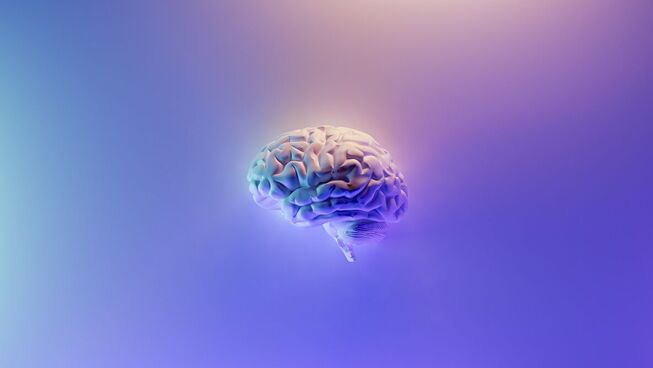Can neuroscience inform morality?

You don’t have to look hard to discover that moral thinking is not straightforward. For example, consider the following dilemma:
The Bridge Dilemma: A runaway trolley is headed for five people who will be killed if it proceeds on its present course. The only way to save them is to hit a switch that will turn the trolley onto an alternate set of tracks where it will kill one person instead of five. Should you turn the trolley in order to save five people at the expense of one? Most people say yes.
Now consider a very similar moral dilemma….
The footbridge dilemma: As before, a trolley threatens to kill five people. You are standing next to a large stranger on a foot-bridge that spans the tracks, in between the oncoming trolley and the five people. In this scenario, the only way to save the five people is to push this stranger off the bridge, onto the tracks below. He will die if you do this, but his body will stop the trolley from hitting the others (your body is not big enough to stop the trolley). Should you save the five others by pushing this stranger to his death? Most people say no.
There are lots of different theories that seek to explain why most people will sacrifice one person to save five in only one of the above scenarios1. These theories attempt to describe our moral reasoning. But the fact that most people give different answers to these dilemmas demonstrates that human moral reasoning is not objective.
Sam Harris: science can tell us how we ought to be
One person who has researched moral reasoning is Sam Harris. Harris is a neuroscientist who also holds a degree in philosophy. He would argue that using science we can understand not only why people make certain moral decisions, but also which decisions are morally right. The blurb from his book “The Moral Landscape: How science can determine human values2” states:
“Defining morality in terms of human and animal well-being, Harris argues that science can do more than tell how we are: it can, in principle, tell us how we ought to be…”
Harris uses a number of different lines of reasoning and evidence to build his argument that science can determine moral behaviour. In this article I want to address and critique this claim, particularly focusing on his discussion of neuroimaging (brain scanning) research.
To give you an extremely short summary of Harris’ argument, Harris conceptualises morality in terms of human wellbeing. Behaviours that are moral will increase human wellbeing and behaviours that are immoral will decrease human wellbeing2.
In a world of different cultures, religions and values it is immensely difficult to determine which behaviours are truly moral. I think conceptualising moral behaviour in terms of human wellbeing is a good start and I respect Harris for that. I also agree with Harris’ claim that there are certain practices (such as female genital mutilation) that objectively decrease wellbeing and are therefore immoral. In this way, Harris rightfully breaks down the idea of moral relativism3 – where the morality of a particular behaviour is only judged relative to the cultural context of an individual.
Harris is vehemently opposed to this line of reasoning, as am I. And so Harris suggests that science can be used to objectively measure human wellbeing. And therefore science, not philosophy or religion, is the means to defining moral behaviour:
“…just as there is no such thing as Christian physics or Muslim algebra, there can be no Christian or Muslim morality3.”
However just because moral relativism is false and different religions and philosophies differ in their moral guidelines, I do not agree that science provides the definitive answer.
Crash course in Neuroimaging techniques
Because Harris uses neuroimaging (brain scanning) evidence in his argument – a crash course in neuroimaging techniques at this point is appropriate. Up until the 1980s neuroimaging consisted primarily of X-Rays, Computerised Axial Tomography (CAT) and Magnetic Resonance Imaging (MRI).
These techniques allow the static imaging of the skull and brain tissue. But since the early 1990s a technique known as functional Magnetic Resonance Imaging (fMRI) has come to dominate neuroimaging research. More than just allowing researchers to view the brain, fMRI allows researchers to view parts of the brain that are active at a particular point in time. Imaging a person’s brain with fMRI while they perform a certain function (such as talking) can show researchers which parts of the brain control that particular function4.
Sam Harris has predominantly used fMRI to measure how the brain processes beliefs5, 6. Harris argues that it is research such as this that can eventually inform the morality of human actions.
Neuroimaging: characterises or defines moral reasoning?
Other researchers have also used fMRI to capture how the brain engages in moral reasoning. For example, Joshua Greene has published widely on the neuroscience of moral reasoning. In one study he placed people into fMRI scanners and presented them with the trolley dilemmas mentioned above. He observed the activity in their brains to try to understand how the human brain engages in moral reasoning.
Their results suggest that, unsurprisingly, our brains work differently depending on what the moral dilemma is. Research such as this gives us insights into how the brain makes moral decisions. Importantly however, researchers such as Greene are careful to state that their research does not inform the morality of particular actions7:
“We maintain that emotional response is likely to be the crucial difference between these two cases [the way people respond to the trolley dilemmas]. But this is an answer to the psychological puzzle, not the philosophical one. Our conclusion, therefore, is descriptive rather than prescriptive. We do not claim to have shown any actions or judgments to be morally right or wrong7.”
Greene et al. go on to state:
“The present results raise but do not answer a more general question concerning the relation between the aforementioned philosophical and psychological puzzles: How will a better understanding of the mechanisms that give rise to our moral judgments alter our attitudes toward the moral judgments we make?7”
Multiple other studies have also successfully shed light on the regions of the brain that mediate moral decision making8, 9, 10. However many of them come to a similar conclusion regarding the applicability of their findings. For example Borg et al9 conclude:
“We want to emphasize that this study was designed to characterize the neural processes involved in responding to moral dilemmas, not to attempt to find answers to how moral dilemmas should be processed or resolved.”
Therefore fMRI is an immensely useful tool for characterising the neural processes that underlie moral and belief-based decision making. However, these studies are descriptive and not prescriptive. They begin to reveal how the brain makes moral decisions but cannot attempt to define the moral decisions that should be made.
By their own admission these neuroscientists confine the latter to the philosophical disciplines. In this way Harris stands apart from his contemporaries when he suggests that research such as this can inform moral reasoning rather than simply characterise it.
To illustrate this practically allow me to present a hypothetical scenario. Imagine you took an unrepentant rapist and an individual who was opposed to rape. You put each of them in an fMRI scanner and ask them their views on rape. Let’s say you found differences in their brain activation while they were discussing their views on rape.
Would the fMRI activation patterns inform your opinion on the morality of rape? Would the difference in how the two brains process the morality of rape enlighten you as to which person’s view of rape is morally ‘right’? The way their brains work will not give you the answer. To answer the question of whether rape is moral or not you have to go back to the behaviour of the individuals and ascertain the consequences of that behaviour on humanity. It seems that we have now come full circle. To understand the morality of an action we need to look beyond the images of the brain and scrutinise the behaviour itself. Such scrutiny requires more of a philosophical and religious line of argument.
Can Jesus offer an alternative path to flourishing?
Many people have recognised that the teaching of Jesus offers a unique morality in which human wellbeing is maximised. Even self-confessed atheist Matthew Parris has acknowledged the positive contribution of Christianity to human wellbeing11. When people follow the teaching of Jesus, characteristics such as greed and malice make way for love and self-sacrifice:
“But to you who are listening I say: Love your enemies, do good to those who hate you, bless those who curse you, pray for those who mistreat you. If someone slaps you on one cheek, turn to them the other also. If someone takes your coat, do not withhold your shirt from them. Give to everyone who asks you, and if anyone takes what belongs to you, do not demand it back. Do to others as you would have them do to you.” (Luke 6:27-31).
I will not try to say that terrible things have not been done in the name of Christianity. These are the product of the distortion of true Christian teaching and the failings of people who have professed to be followers of Jesus. The Christian worldview, founded on biblical principles, provides moral principles that are absolute and eternal.
It anchors humanity in a worldview that seeks human wellbeing in a way that transcends all cultural differences12. When we are tossed to-and-fro by the ever changing face of our world, it is the hope we find in a creator God which can give us common ground from which to seek human wellbeing.
And so neuroscience has given us wonderful tools to understand human thought and behaviour. fMRI is one of those tools and it gives us fascinating insights into the workings of the human brain as we grapple with moral questions. And yet these insights remain descriptive not prescriptive. As has always been the case, it is philosophical and religious discussion that will inform human moral reasoning.
Photo by Milad Fakurian on Unsplash
[1] Singer, P. (2005). Ethics and intuitions. The Journal of Ethics, 9, 331-352.
[2] Harris, S. (2010). The moral landscape: How science can determine human values. Transworld Publishers, UK.
[3] Beebe. J.R. (2010). Moral relativism in context. Nous, 44(4), 691-724.
[4] Cabeza, R., & Kingstone, A. (2006). Handbook of functional neuroimaging of cognition (2nd edition). Cambridge, Mass; London:MIT.
[5] Harris, S., et al. (2008). Functional neuroimaging of belief, disbelief, and uncertainty. Annals of neurology, 63(2), 141-7.
[6] Harris S., et al. (2009). The Neural Correlates of Religious and Nonreligious Belief. PLoS ONE, 4(10), e7272.
[7] Greene, et al. (2001). An fMRI investigation of emotional engagement in moral judgment. Science, 293, 2105-2108.
[8] Yoder, K.J. & Decety, J. (2014). The good, the bad, and the just: Justice sensitivity predicts neural response during moral evaluation of actions performed by others. The Journal of Neuroscience, 34(12) 4161-4166.
[9] Borg et a. (2006). Consequences, action and intention as factors in moral judgments: An fMRI investigation. Journal of Cognitive Neuroscience, 18(5), 803-817.
[10] Decety, J., & Porges, (2011). Imagining being the agent of actions that carry different moral consequences: An fMRI study. Neuropsychologia, 49(11), 2994-3001.
[11] Parris, M (2008). http://old.richarddawkins.net/articles/3502-matthew-parris-as-an-atheist-i-truly-believe-africa-needs-god. Accessed 1st September 2014.
[12] Dickson, J. (2008). https://publicchristianity.org/library/relativism-part-iii-the-limits-of-relativism#.VAPrQqOLVEM. Accessed 1st September 2014.
Image courtesy of dream designs at FreeDigitalPhotos.net





